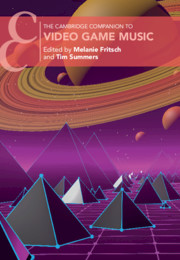Book contents
- The Cambridge Companion to Video Game Music
- Cambridge Companions to Music
- The Cambridge Companion to Video Game Music
- Copyright page
- Contents
- Figures
- Tables
- Musical Examples
- Contributors
- Preface
- A Landmark Timeline of Video Game Music
- Foreword: The Collaborative Art of Game Music
- Introduction
- Part I Chiptunes
- 1 Before Red Book: Early Video Game Music and Technology
- 2 Chiptune, Ownership and the Digital Underground
- 3 Waveform Wizard: An Interview with Composer Junko Ozawa
- Part II Creating and Programming Game Music
- Part III Analytical Approaches to Video Game Music
- Part IV Realities, Perception and Psychology
- Part V Game Music, Contexts and Identities
- Part VI Beyond the Game
- 24 Producing Game Music Concerts
- Select Bibliography
- Index
- References
3 - Waveform Wizard: An Interview with Composer Junko Ozawa
from Part I - Chiptunes
Published online by Cambridge University Press: 15 April 2021
- The Cambridge Companion to Video Game Music
- Cambridge Companions to Music
- The Cambridge Companion to Video Game Music
- Copyright page
- Contents
- Figures
- Tables
- Musical Examples
- Contributors
- Preface
- A Landmark Timeline of Video Game Music
- Foreword: The Collaborative Art of Game Music
- Introduction
- Part I Chiptunes
- 1 Before Red Book: Early Video Game Music and Technology
- 2 Chiptune, Ownership and the Digital Underground
- 3 Waveform Wizard: An Interview with Composer Junko Ozawa
- Part II Creating and Programming Game Music
- Part III Analytical Approaches to Video Game Music
- Part IV Realities, Perception and Psychology
- Part V Game Music, Contexts and Identities
- Part VI Beyond the Game
- 24 Producing Game Music Concerts
- Select Bibliography
- Index
- References
Summary
Junko Ozawa was born in 1960 in the Saitama prefecture. After attending the Musashino College of Music as a student in the Musicology Department and graduating with a major in Instrumental Piano, she joined the Namco Corporation in 1983 (now Bandai Namco Entertainment). The first game she worked on was Gaplus (1984, the name was later changed to Galaga 3 in the United States), and following this game, she was in charge of the music for The Tower of Druaga (1984, for which she also wrote the sound driver) and Rolling Thunder (1986), amongst several other games. She was also responsible for porting some of her game music from the Arcade to the Famicom versions (e.g. The Tower of Druaga), and further created the music for games that Namco developed for other companies, including Nintendo’s critically acclaimed rhythm game Donkey Konga (for the Nintendo GameCube, 2003). She is credited alongside Toshio Kai, Nobuyuki Ohnogi, Yuriko Keino and Yuu Miyake for the song ‘Katamari On Namco’ on the Katamari Damacy – Touch My Katamari Original Sound Track 2 soundtrack release of the PlayStation Vita title Touch My Katamari (2011). Since leaving Namco in 2008, she has continued to compose music, alongside giving piano performances and doing a variety of musical activities.
Information
- Type
- Chapter
- Information
- The Cambridge Companion to Video Game Music , pp. 52 - 58Publisher: Cambridge University PressPrint publication year: 2021
